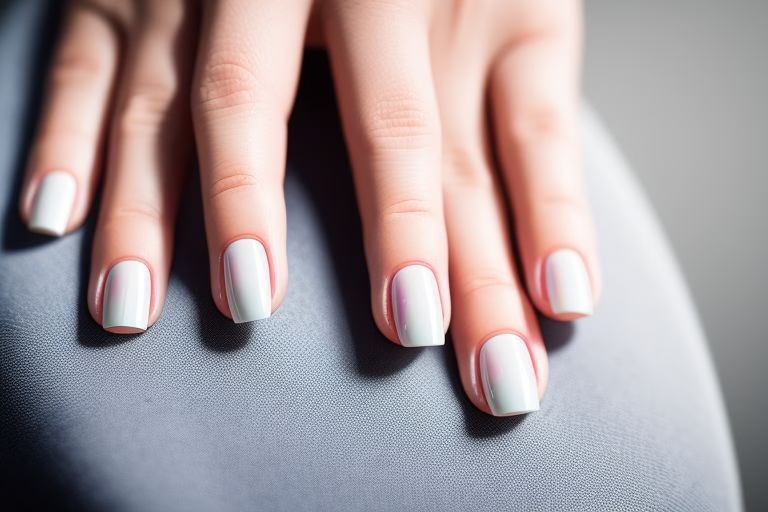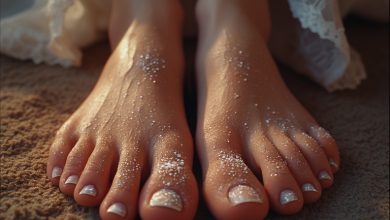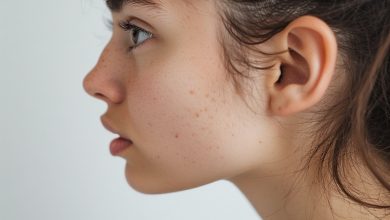
Have you ever looked down at your fingers and noticed your nails look rounder, puffier, or like they’re curving downward? That might not be just a cosmetic change — it could be a warning sign of something serious. What you’re seeing might be clubbed nails, and this seemingly minor nail change can actually be your body’s cry for help.

In this article, we’ll walk you through everything you need to know about clubbed nails, including what causes them, how to recognize them, and what steps to take next. If you’re concerned about your health or someone else’s, read this entire guide carefully — because early detection could make all the difference.
What Are Clubbed Nails?
Clubbed nails (also known as nail clubbing) is a physical change in the shape of your fingernails or toenails. Normally, nails grow straight and flat, but in clubbing, the nail tips enlarge and curve downward, and the area around the nails becomes swollen or soft.
Here’s how to recognize clubbed nails:
-
The nail becomes more rounded and bulbous
-
The angle between the nail base and the cuticle increases
-
Nail feels spongy or soft when pressed
-
The nail may appear shiny
In most cases, clubbing is not painful, but it’s often associated with underlying health conditions that shouldn’t be ignored.
1. Clubbed Nails Can Be a Sign of Lung Disease
One of the most common reasons for clubbed nails is a chronic lack of oxygen, which often comes from lung problems. If your body isn’t getting enough oxygen, it tries to compensate by increasing blood flow to the fingertips — this results in the swelling and curving of the nails.
Conditions that may cause clubbing due to lung issues include:
-
Chronic obstructive pulmonary disease (COPD)
-
Pulmonary fibrosis
-
Tuberculosis
According to American Lung Association, lung cancer is one of the top diseases linked to clubbed nails, especially when it’s located in the upper lungs.
2. It Might Point to Heart Problems
If your heart isn’t pumping oxygen-rich blood efficiently, your body may begin to show external signs — like clubbed nails. This is especially true in congenital heart defects, where low oxygen levels persist for long periods.
Heart conditions linked to clubbing:
-
Congenital cyanotic heart disease
-
Endocarditis (infection of the heart lining)
-
Atrial myxoma (a rare heart tumor)
The Cleveland Clinic notes that early signs of poor circulation often show up in the hands and nails — so don’t brush off these changes.
3. It Could Be a Symptom of Digestive Disorders
Surprisingly, your gut health could also be connected to nail clubbing. Some inflammatory and chronic digestive conditions affect nutrient absorption and cause inflammation throughout the body, including in the fingertips.
Digestive disorders related to clubbed nails include:
-
Crohn’s disease
-
Ulcerative colitis
-
Celiac disease
-
Liver cirrhosis
According to Healthline, the liver and intestines play a crucial role in how oxygen is transported, and any disruptions there can trigger physical symptoms like clubbing.
4. Clubbed Nails May Be Linked to Thyroid Issues
Did you know thyroid imbalances can change the shape of your nails?
Graves’ disease, an autoimmune disorder causing hyperthyroidism, has been linked to digital clubbing. It’s not just fatigue or weight loss you need to watch for — your nails can also tell you if your hormones are off balance.
If you’re experiencing sweating, anxiety, or trembling hands along with clubbed nails, it’s wise to get your thyroid function checked ASAP.
5. It Might Run in the Family (But Still Needs Attention)
In some rare cases, clubbing is hereditary. If your parents or siblings have always had rounded nails and no one has been diagnosed with a serious condition, it might just be a benign inherited trait.
However, even if it’s genetic, you should still get it evaluated at least once to rule out any underlying silent health concerns. Don’t take chances with your body’s subtle warning signs.
6. You May Not Notice It at First — But It Progresses
One of the tricky parts about clubbed nails is that they develop gradually. Most people don’t notice the changes until the clubbing becomes obvious.
Here’s a breakdown of the stages:
-
Fluctuation and softening of the nail bed
-
Increased curvature of the nail
-
Shiny appearance and broadening of the nail tip
-
Bulbous fingertips (drumstick appearance)
By the time it reaches stage 4, you’re likely looking at a chronic or serious underlying condition.
7. It’s Reversible — But Only If the Underlying Cause Is Treated
Here’s the good news: clubbed nails can go back to normal, but only when the root cause is addressed. The nail changes themselves don’t need direct treatment — your focus should be on diagnosing and managing the health issue behind it.
Steps to take:
-
Visit your primary care doctor or a dermatologist
-
Request blood oxygen level tests
-
Get a chest X-ray or CT scan if respiratory symptoms are present
The sooner you act, the better your chances of reversing the clubbing and catching a potentially serious illness early.
How to Monitor Nail Health at Home
Pay attention to small changes in your nails. Here’s what to watch for:
-
Are the tips of your fingers becoming rounder?
-
Do your nails curve down?
-
Do they feel soft or spongy?
-
Are you experiencing other symptoms like fatigue, breathlessness, or chest pain?
Use the Schamroth window test: Put your index fingers together nail to nail. If you don’t see a small diamond-shaped gap between the nails, it could be a sign of clubbing.
When to See a Doctor
You should see a healthcare provider if:
-
You notice your nails changing shape over weeks or months
-
You experience chronic cough, fatigue, or unexplained weight loss
-
You have a family history of lung or heart disease
-
You feel breathless without exertion
Remember: Your nails are like little messengers from inside your body — and they often show you red flags long before other symptoms kick in.
Don’t Panic — Just Take Action
Seeing clubbed nails might feel scary, but it’s also a powerful early warning sign. Many of the conditions linked to nail clubbing are treatable — especially if diagnosed early.
Don’t ignore the clues your body is giving you. Use them as motivation to get a checkup, ask questions, and advocate for your health. After all, nobody knows your body better than you.
Quick Recap: What You Need to Know
✅ Clubbed nails are nails that curve downward and become swollen at the tips
✅ They’re often linked to lung, heart, digestive, or thyroid diseases
✅ Can sometimes be hereditary, but still worth checking
✅ Gradually progressive and may be unnoticed at first
✅ Reversible, but only with proper medical diagnosis and treatment
Helpful Resources for Further Reading
Final Thoughts
Clubbed nails aren’t just a cosmetic issue — they could be your body’s way of waving a red flag. Don’t overlook this silent sign. Get it checked, get informed, and take control of your health.
Share this article with a friend or loved one who may need to see it. You could be saving a life by simply raising awareness.



